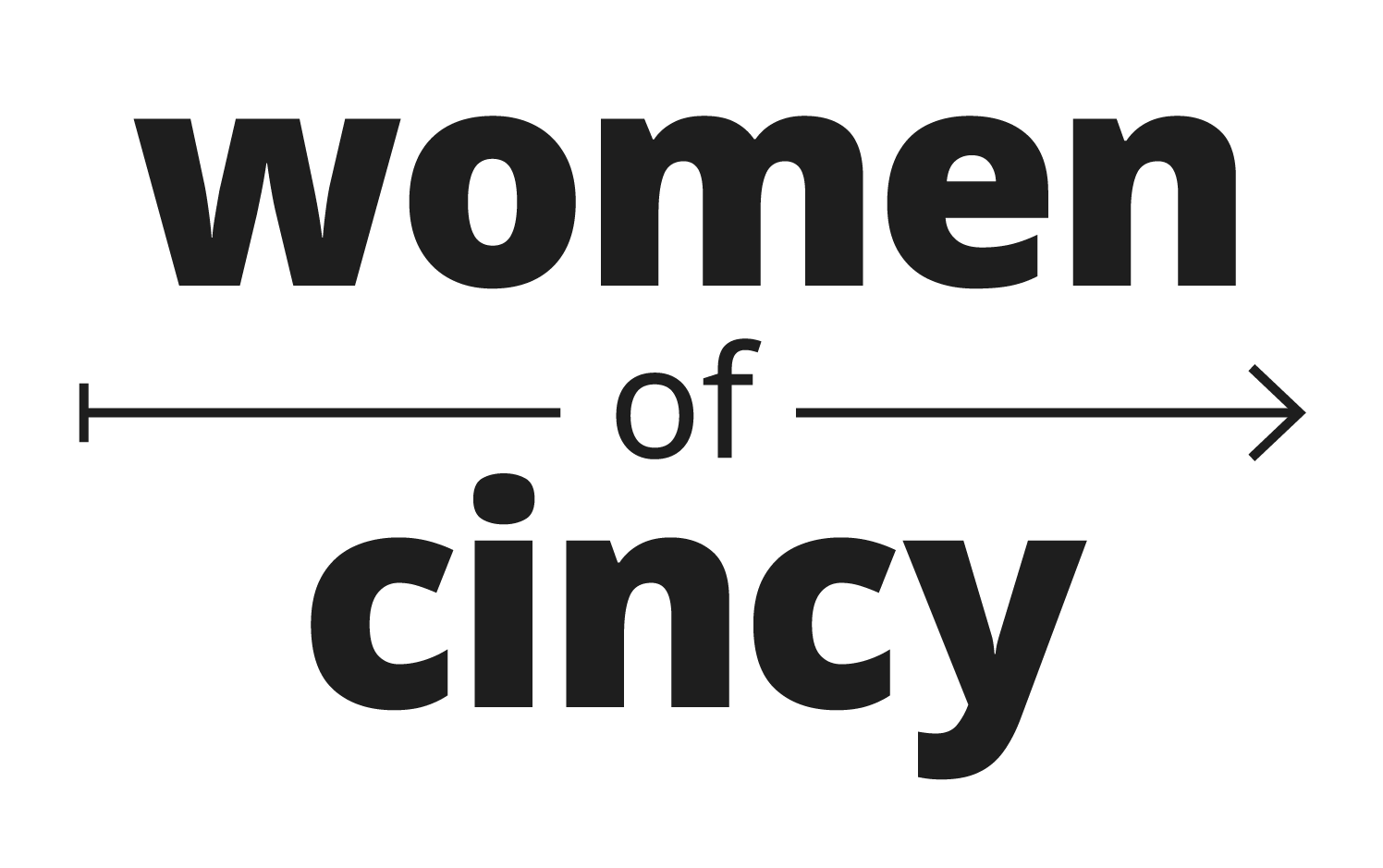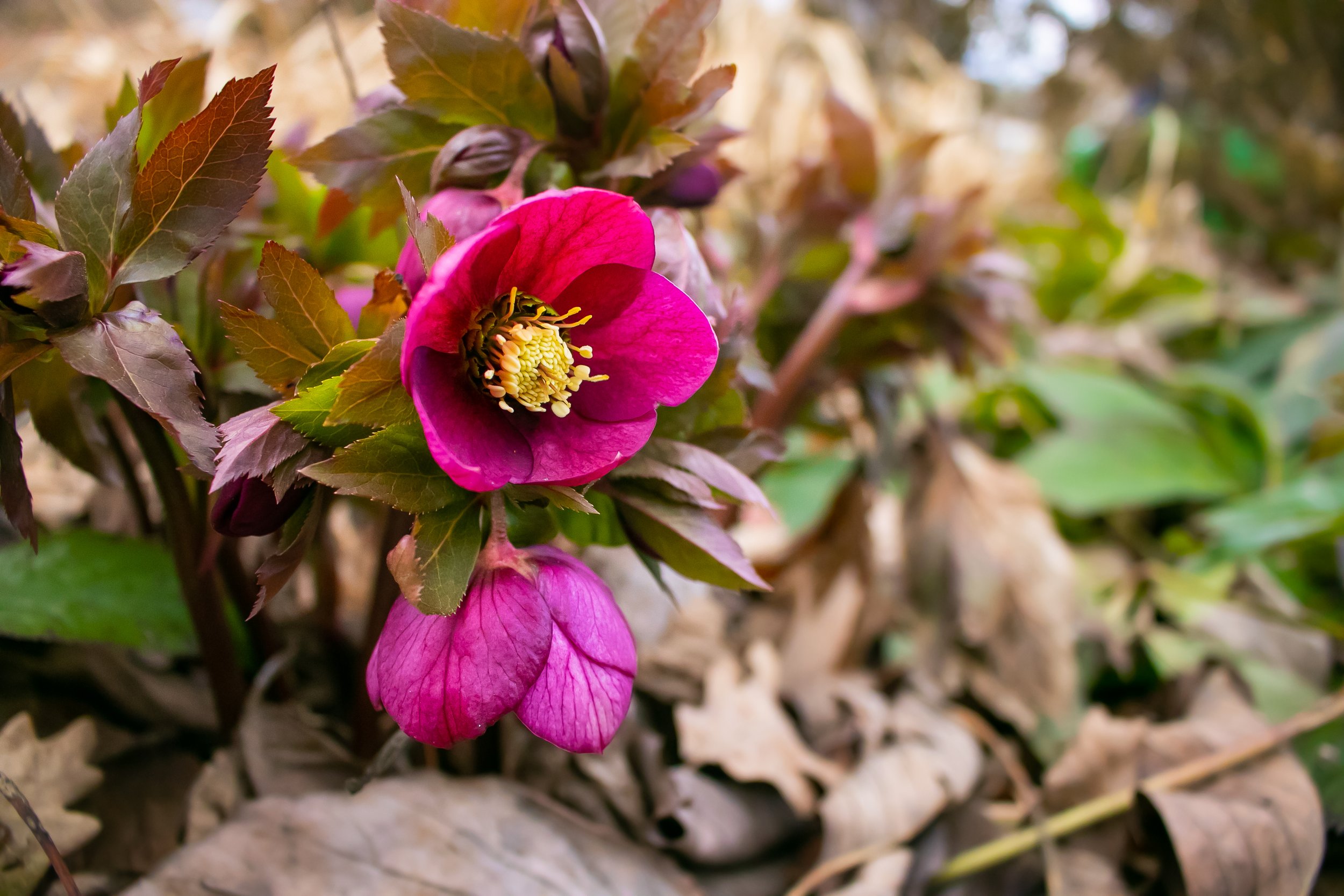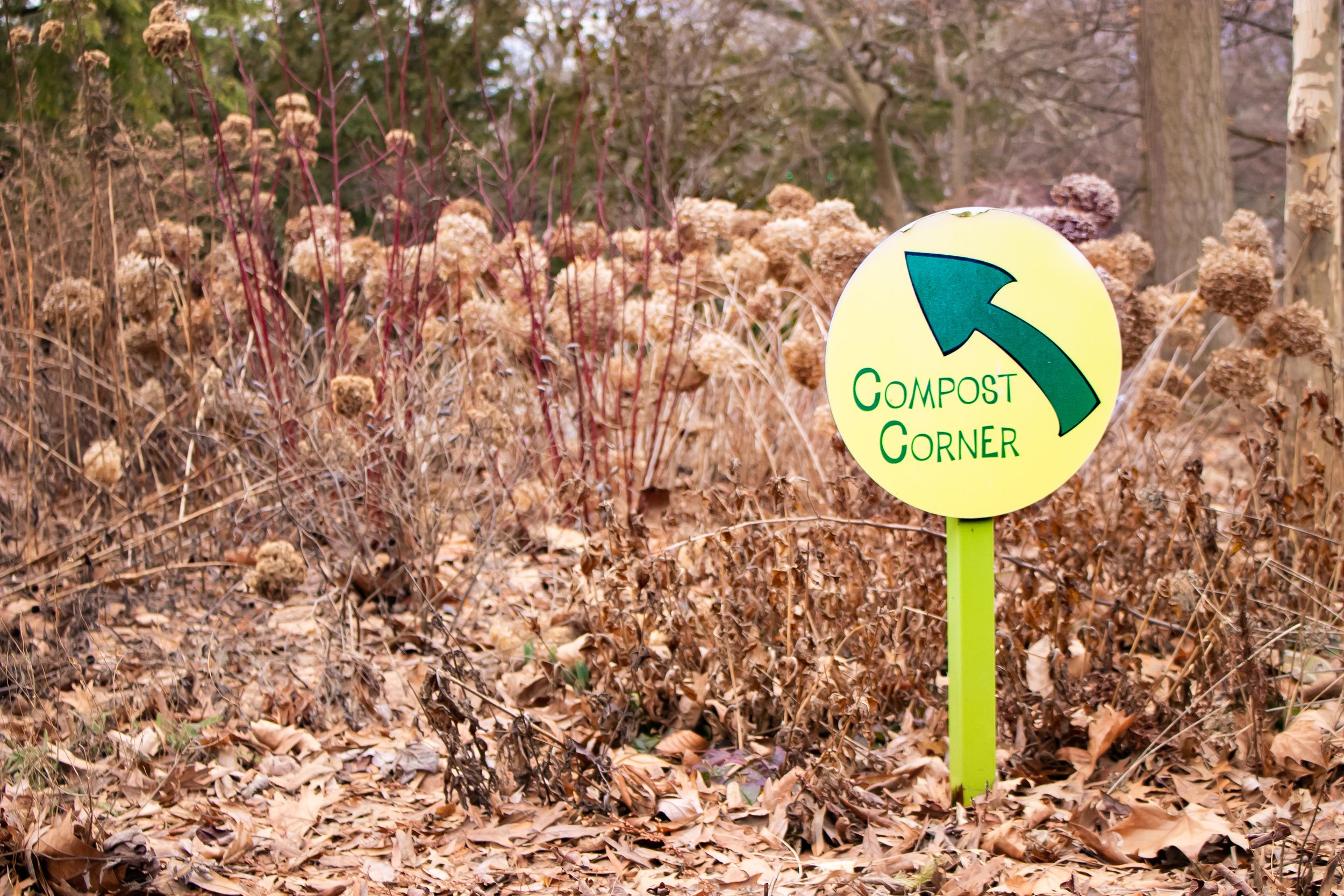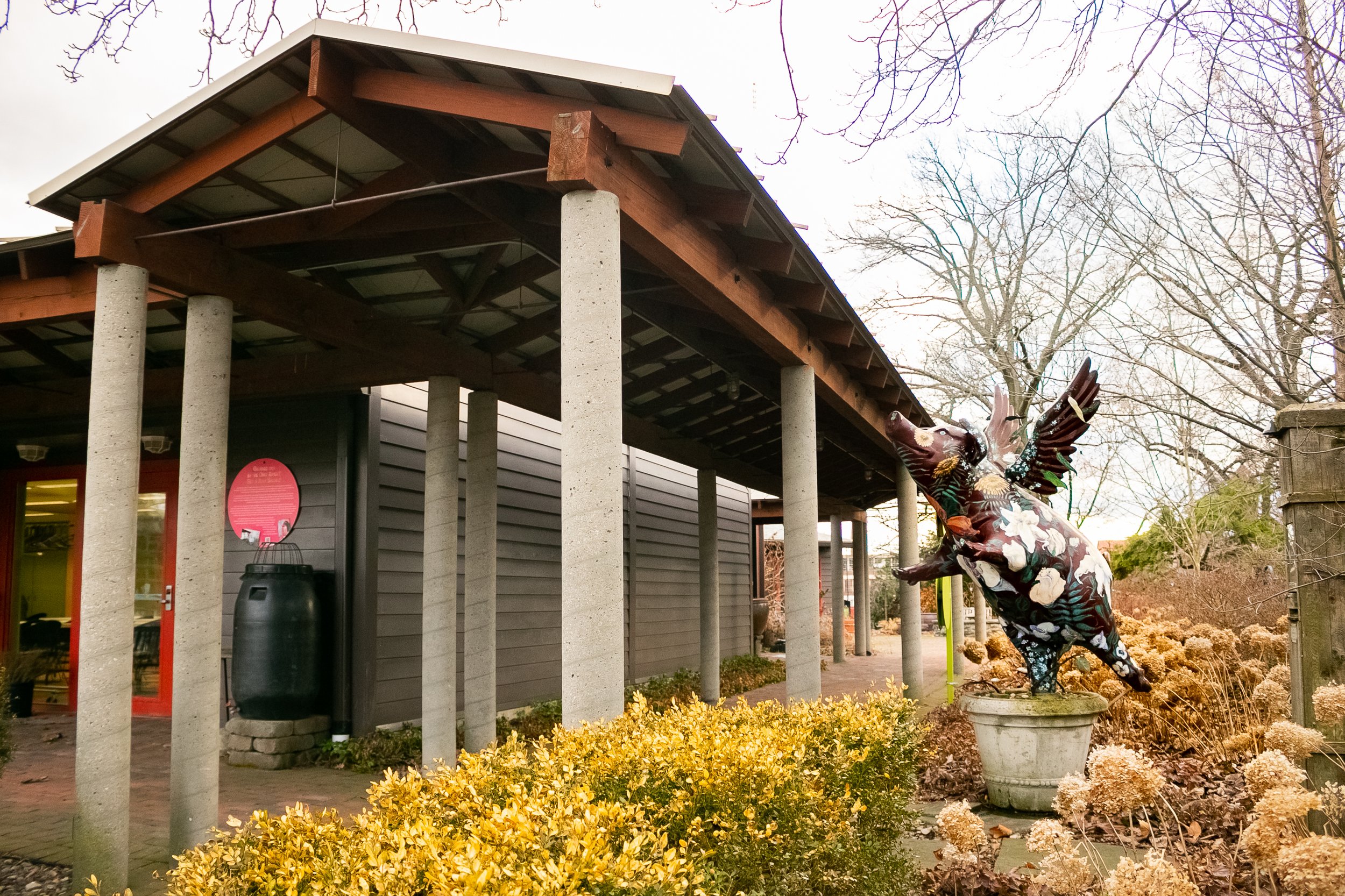Get up and Grow with the Civic Garden Center
On a ridiculously windy February afternoon, I met Executive Director Karen Kahle at the Civic Garden Center (C.G.C.). Tucked away at the corner of William Howard Taft and Reading Road, the C.G.C., located inside the Hauck Botanic Gardens, is a plant lover's dream. Despite the cold, the property is full of life and activity as Karen and I sit down to chat about history, native plants, building community, ecology, and how we can all be better stewards of this place we call home.
Interview and photography by Chelsie Walter.
In 1942, the Civic Garden Center started with a group of garden club ladies who wanted to help folks build local Victory Gardens during World War II. After visiting several public gardens, the group launched the C.G.C. with $50 from the Federated Garden Club. After the war, Karen says, “It really kind of morphed into more of a Horticulture center – more focused on just beautification.”
Over the decades, the C.G.C. evolved, changing locations and redefining its mission to stay relevant with broader conversations surrounding culture, local habitats, social justice, and the needs of the community and environment. Included in those iterations were programs geared towards educating children and building community gardens. Over 40 years ago, C.G.C.’s first community garden, the O.T.R. People's Garden began and remains active today. That first garden spurred the creation of over 65 community gardens that currently fall in C.G.C.’s network.
In addition to community gardens, C.G.C. is heavily involved in educating folks about gardening, native plants, beekeeping, cooking, ecology, and a host of other nature and wellness-based topics. The ages for these programs range from elementary kids to teenagers, grown adults, and retirees. There’s really something for everyone at CGC and so many chances to get your hands dirty.
At its core, the C.G.C.’s mission is to build community through gardening, education, and environmental stewardship. Before unpacking the “how” behind CGC’s work, let’s chat more about “who” and “why.” Plus, what you can do with your backyard, balcony, or window sill to tap into the goodness that is growing your mini-ecosystem.
So “who” should hopefully still be reading this article? YOU. If you’ve ever stopped and felt the sun on your face, listened to a singing bird, or knelt down to smell a flower – you’ve been entranced by this little thing we call nature. And there’s a very powerful reason why. Karen explains:
“We're wired for it. We're part of nature. It's not like you have to impose something on top of us as humans – it's inside us already. It just has to be activated. A lot of people haven't had the opportunity to activate those muscles, so to speak. Once they are, nature does its work; it makes people feel better. There's a response that is natural to us. We haven't lost it yet. There's increasingly more research suggesting that even walking by a garden gives you a little dopamine boost – there are so many benefits. They're measurable.”
This dopamine boost from gardening is proving so beneficial that doctors from the United Kingdom’s National Health Service are prescribing gardening to treat certain patients instead of, or alongside, medication. Numerous studies point to gardening as a proven way to decrease anxiety and depression and increase overall physical and mental health. And get this: there’s even a bacteria, Mycobacterium vaccae, found in soil that’s been shown to mimic the effects on neurons that drugs like Prozac create – stimulating the production of serotonin! What’s serotonin? It’s the chemical nerve cells produce that helps us feel happy and heal wounds. Pretty cool, huh? During the height of the pandemic, many of us were looking for that serotonin boost. Karen explains, “If you help something grow, it gives back to you. Look at house plants during the pandemic. People were going crazy with house plants because they were stuck in their homes, and it felt good to have something else alive in the house with them.”
On top of the dopamine and serotonin boost we get from placing more plants in the soil, we also benefit from the elevated nutrition levels of locally grown plants, improved air quality, lower risks of heat strokes, and so much more. The nonprofit American Forests states, “Trees across the U.S. absorb 17.4 million tons of air pollutants, preventing 670,000 cases of acute respiratory symptoms annually.”
That relationship with nature is also reciprocal. We play a huge role in how our environment functions, and without significant steps taken, we stand to lose so many critical species of plants and wildlife worldwide. It’s a topic too big for this piece, but I recommend reading C.G.C.’s approach to the climate and ecological crisis here, and this story, this story, and this story just to scratch the surface.
The research is evident as to why we crave relationships with plants and how we benefit, but how do we build community at the same time? We’re also wired for human interaction. The C.G.C. has an answer for that, too:
“I think when you get people outside, and you've got them involved in doing something out in nature, it's a pretty great equalizer… We have an amazing community gardens coordinator, Kymisha Montgomery. Last year, she did 36 gardening and cooking classes in what we call our ‘hub gardens.’ She can show and demonstrate things right there. She can do more hands-on work and engage the folks in the learning and cooking classes. We harvest the stuff she will cook that evening and put it together. She's a very good cook and has a degree in nutrition, so we also put together a cookbook with her recipes from the cooking classes. It opens people's eyes – they can make fresh vegetables taste great. I'm excited about the work that Kymisha is doing and moving into several hub gardens. We're really going to be pushing out those classes.”
The Civic Garden Center boasts an impressive 700+ volunteers who help transform and restore dozens of spaces across the city. The opportunities to learn, do, and build community are abundant, from Green Teens, K-12 Education, community gardens, Treeforestation, and so many more programs.
I asked Karen why she feels so strongly about building community and how they’ve grown a successful volunteer program. She says:
“I believe that people are looking for connection. As I said before, we’re all a part of this ecosystem. We're connected to everything. If we are isolated or we feel cut off, we don't feel great. We're not feeling like life is really good. We're looking for genuine connection. We're pretty serious about the community-building aspect of it – the belief that if you bring people together to do something outside in nature – to plant something, take care of something, get rid of an invasive species, and replace it with something better for the environment – that you can create a community of people who like being together.”
In addition to building community, there’s also a social justice component to the C.G.C.’s work. It doesn’t take a rocket scientist to understand why food deserts harm lower-income communities. In addition to access to healthy foods, lower-income communities that lack community gardens, tree canopies, and green space miss out on those mental and physical health benefits mentioned earlier. A recent N.P.R. article makes a case for greening our cities:
“As the globe heats up, cities across America are taking a fresh look at their trees. They keep urban neighborhoods cooler, make air conditioning bills manageable, and, most importantly, protect lives during heat waves. They help capture stormwater runoff, and as trees grow, they remove heat-trapping carbon dioxide from the air. Some cities are now moving to increase their tree canopy, in part to shield against the worst effects of climate change.”
Karen and the staff at C.G.C. are also mindful that some of our public parks, trails, and lands haven't always been welcoming to Black and brown folks:
“I think just spreading that message that for us as an organization, we're aware that traditionally you haven't seen a lot of Black and brown people camping and fishing and doing a lot of those things, primarily because they didn't feel safe in the woods or around the lake or they get weird looks. They just didn't feel safe. And so to get people out there and to have an experience where they feel welcome, where they feel safe, where they are getting the skills to restore the forest in their neighborhood or build a garden, it's going to take a little while. But we're super aware of that here and just trying to reach more adults… One of the things not a lot of people realize is a lot of immigrants are coming from countries where people are not so many generations separated from nature or from growing food. They just need the opportunity, need the space, need a welcoming organization.”
So besides getting involved with the C.G.C., what can you do at home to be a better steward of the land in your community or whatever space that you have access to? A lot, actually. Let’s start with invasive species. Knowing what’s invasive and what’s not is crucial. Just because you can purchase a plant doesn’t mean you should. Karen says:
“We all know that it started out as something that people thought was exotic or cool and was brought here from somewhere else. Maybe it's controllable in your yard, but in a forest, it has a much greater opportunity to take off and take over. Like most of the Midwest, we have a tremendous invasive species problem. They're tough to get rid of. They're tough to get rid of in an environmentally friendly way – that's going to involve a lot of hand labor. The lesser celandine, the little yellow flower budding out there already – we have people come here all the time saying, ‘Oh, that's so beautiful.’ And you're like, ‘No, it's really not; it's invasive.’ If you could contain them, okay, that would be pretty to look at for a few weeks, but the problem is they take over and choke everything off. That's why they're called invasive. They invade every inch and take over and choke off other healthy plants.”
Other invasives in our region include Amur honeysuckle, winter creeper (Euonymus), garlic mustard, and many more. Check out this list and learn how to identify each of them. Next step? Remove as many as possible!
Now, let’s chat about what to plant! Swapping out turf grass for herbs and edibles can go a long way in changing your relationship with food. Picking a highly nutritious, homegrown tomato in the height of summer? That’s the stuff dreams are made of! But we can go even further with our planting plans.
Everyone loves veggies, fruits, and cut flowers – but did you know native plants have grown alongside wildlife for thousands of years, developing intricate relationships with individual species? Many native pollinators require certain plants as hosts – such as our beloved monarch butterflies and milkweed. This same relationship extends far beyond just monarchs.
According to ecologist Doug Tallamy, “introduced plant species provide on average 68% less food for insects than natives.” Why does that matter so much? Tallamy explains, “The World Wildlife Fund reported that Planet Earth has lost two-thirds of its wildlife since 1970. This jaw-dropping news joins a litany of recent reports about the decline of insects globally, the loss of three billion North American birds, the failure of the 150-nation global biodiversity initiative to meet any of its ten-year goals, and the prediction by the U.N. that one million species will go extinct in the next twenty years.” Whoa.
That’s heavy, but numerous individuals and organizations are making necessary impacts with the spaces they have access to – outside of government and legislature (but that’s important, too!). Jump in locally with groups like the Civic Garden Center, Cincinnati Zoo’s Plant for Pollinators campaign, Homegrown National Park, Pollinator Pathways, and more.
On your end, resist the urge to walk into a big box store this spring and haphazardly grab plants you’re drawn to – opt for a native plant sale or talk to your local nurseries. If you need help sourcing plants, hit up these upcoming sales and ask questions!
Civic Garden Center Annual Plant Sale: Saturday, May 6, and the online sale starts in April
The Cincinnati Zoo, Native Plant Sale: April 22, May 6, May 20
Cincinnati Nature Center Spring Native Plant Sale: Saturday, April 22 – Sunday, June 4
You can also familiarize yourself with what beneficial plants you might have already growing in your backyard. Check out this list of keystone species (basically, the most bang for your buck…er…plant) from the National Wildlife Federation.
So to sum all of this up, just take a leap. Do a bit of “digging” before you dig, and HAVE FUN! Consider signing up for a class at the C.G.C., dropping in for a neighborhood work day, or just walking the grounds at CGC. It’s good for your soul, the environment, and our future generations. Get up, get out, and grow!
Women of Cincy is a certified 501(c)3. This belongs to you. Consider supporting future stories with a donation. Do you know an awesome Cincinnatian? Nominate them here! New features launch on Mondays.










